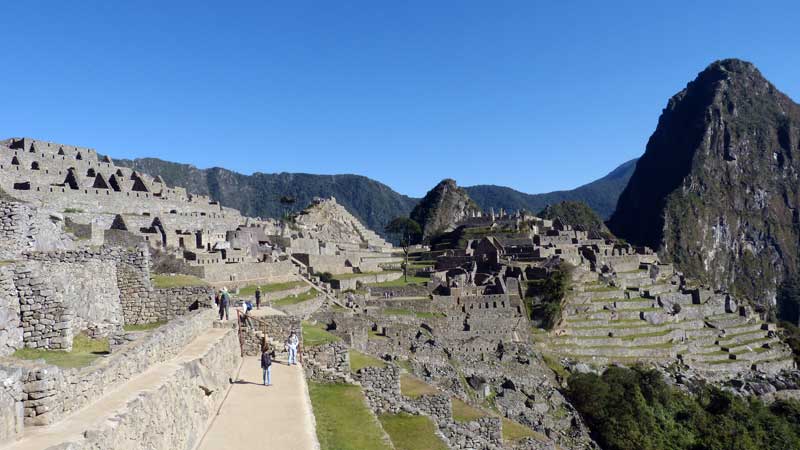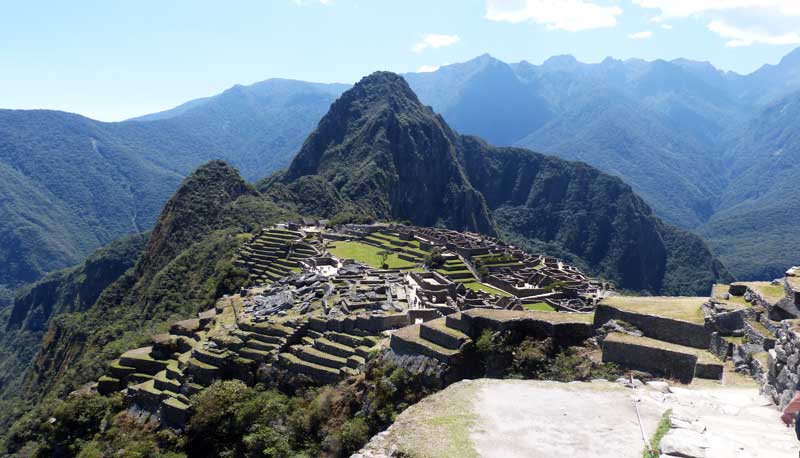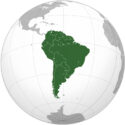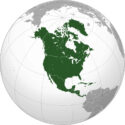 The Incas were one of the most advanced and powerful civilizations in the Andes Mountains of South America. They built a large empire that stretched to many regions of modern-day Peru, Ecuador, Chile, Argentina, and Bolivia. It was the largest empire in the Americas before the arrival of European Explorers.
The Incas were one of the most advanced and powerful civilizations in the Andes Mountains of South America. They built a large empire that stretched to many regions of modern-day Peru, Ecuador, Chile, Argentina, and Bolivia. It was the largest empire in the Americas before the arrival of European Explorers.
The Rise of the Inca Empire
 The Inca Empire arose in the early 1400s in the highlands of Peru. At the beginning, it was just a small kingdom, but its first ruler, Pachacuti, expanded it into a powerful empire. He conquered the nearby tribes to expand the Inca land across the Andes Mountains. The empire expanded quickly under the rule of Pachacuti and became the largest empire before the arrival of European explorers.
The Inca Empire arose in the early 1400s in the highlands of Peru. At the beginning, it was just a small kingdom, but its first ruler, Pachacuti, expanded it into a powerful empire. He conquered the nearby tribes to expand the Inca land across the Andes Mountains. The empire expanded quickly under the rule of Pachacuti and became the largest empire before the arrival of European explorers.
The expansion of the Inca was mostly driven by military force and peaceful agreements with tribes. Later on, the rulers consolidated the empire by building a network of roads and bridges that connected all the cities and villages. The road network made it very efficient to control their far territories and quickly send and receive messages from messengers, known as chasquis.
Inca Society
Daily Life
The societies in the Inca Empire were well organized and lived by the rule of emperors who called themselves Sapa Inca. The emperor was believed to be the son of the Sun God. After the emperor, societies were led by priests, nobles, and government officials. Most people were skilled in farming, building, and craftwork. They supported the empire in producing food, goods, and labor.
Agriculture
One of the key features of Inca life was the farming technique. They had very little flat land space for farming, so they built terrace farms by carving steps into the hillsides. In the terrace farms, they grew potatoes, maize, and quinoa. The irrigation of terrace farming was done by mountain water, which also helped in preventing Soil erosion.
Amazing Achievements of the Inca
Road System
The network of roads built by the Inca was very fascinating. They built over 24,000 miles (38,000 km), which stretched over Mountains, valleys, and deserts to connect cities and villages.
Quipu – Record Keeping System
The Incas didn’t have written language for recordkeeping; they developed a clever technique, quipu, for keeping records. Quipu was a system that used colored strings with different knots for recordkeeping. The type, color, position, and number of knots helped the government official to keep a record of taxes, food supplies, population, and expenditure.
Architecture
 The architects of the Inca were very expert and could build structures with very precise cuts and sophistication. The most famous example of their architecture is Machu Picchu – a wonderfully built temple high in the Andes Mountains. They carved huge stone blocks and placed them together without using any cement. The structure of Machu Picchu is strong enough to withstand Earthquakes.
The architects of the Inca were very expert and could build structures with very precise cuts and sophistication. The most famous example of their architecture is Machu Picchu – a wonderfully built temple high in the Andes Mountains. They carved huge stone blocks and placed them together without using any cement. The structure of Machu Picchu is strong enough to withstand Earthquakes.
Religion and Beliefs
Inca religion was based on the belief in multiple gods, among them the most powerful god was Inti, the Sun God. After the gods, the emperor was considered the most powerful person and considered to be the descendant of Inti.
The Inca used their architectural skills in the development of large temples to honor the gods. They also celebrated yearly festivals and ceremonies to please the gods. The most important temple was the Temple of the Sun, which was coated with Gold. In this temple, people used to give sacrifices and offerings to the Sun god in the form of food, gold, animals, and even humans.
The Fall of the Inca Empire
The well-flourishing Inca Empire, despite being so powerful, came to an end suddenly in the early 1500s. The downfall began when two brothers fought each other for the throne of the emperor. At that time, the outbreak of smallpox and other diseases also weakened the empire further.
These two unfortunate events were already destroying the empire, and then came the Spanish explorer Francisco Pizarro. He invaded the Inca Empire with his small army and powerful weapons in 1532 and captured the emperor Atahualpa. After the invasion, the Inca Empire collapsed, and the Spanish took over the land, marking an end to the greatest civilization of the Americas.
Archaeological Discoveries

Archeologists have found many fascinating artifacts and structures in the ancient remains of the Inca Empire. They have studied their tools, pottery, textiles, and jewelry, which helped in piecing together the history of the Inca. One of the most famous discoveries was Machu Picchu, which remained preserved for centuries and was discovered in 1911. Also, the structures of the city remained intact against destruction because it remained hidden from the Spanish for centuries.
Another important discovery was the mummies of the Inca people. The Incas believed in life after death, so they often mummified their dead to preserve their bodies. The mummies were found in mountain Caves and graves in good condition due to the cold and dry climate at high altitudes of the Andes Mountains.
Fun Facts
- Incas mostly used packs of llamas to transport goods across the mountains.
- Potatoes were a very important crop of the Inca. They grew about 3,000 types of potatoes and invented a way to freeze-dry them for years of storage.
- The Inca employed a large group of runners, called chasquis, who passed messages over hundreds of miles within a few hours. Each chasquis had to run for miles to hand messages to other chasquis before running to the same position.





